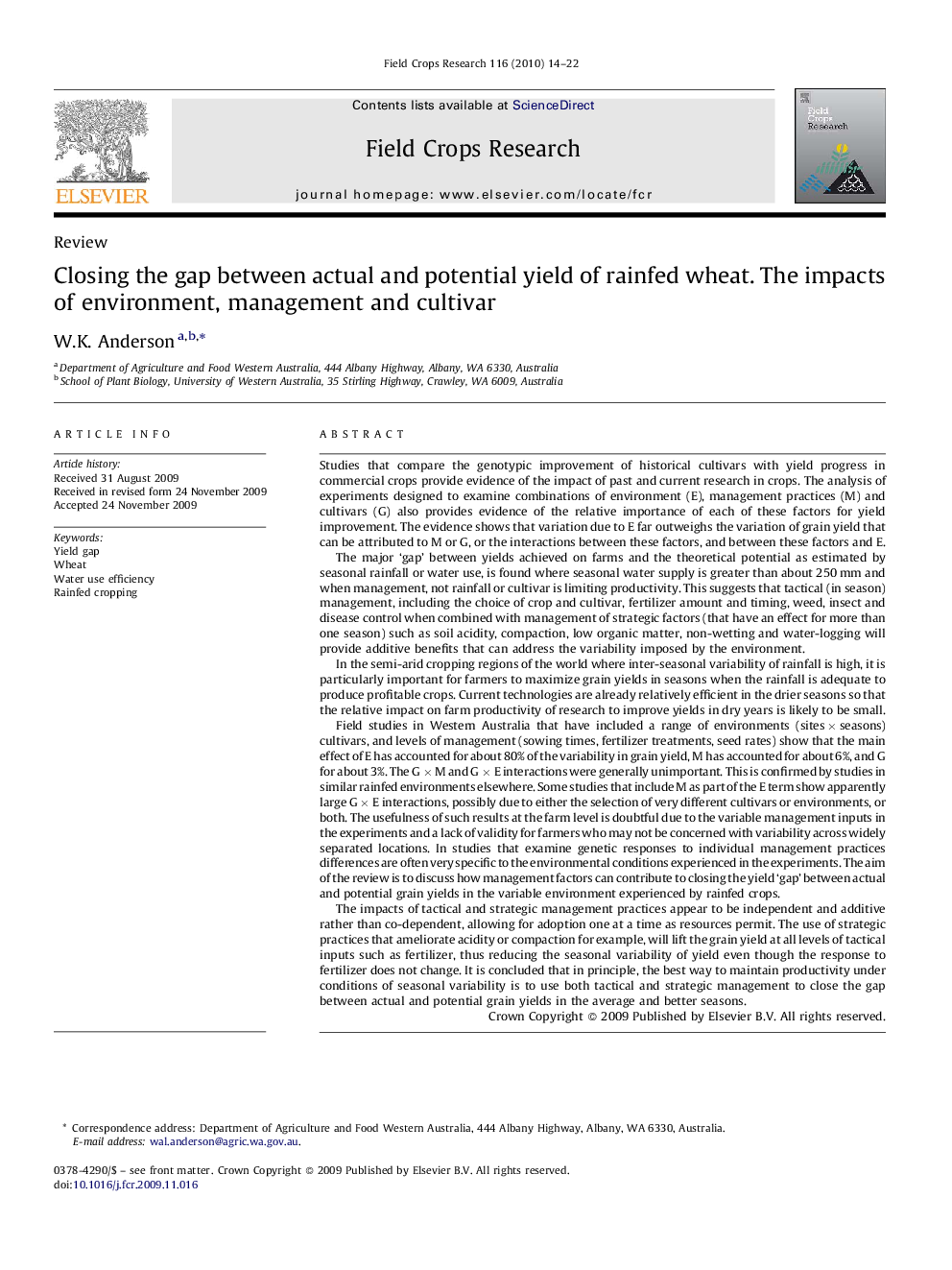| Article ID | Journal | Published Year | Pages | File Type |
|---|---|---|---|---|
| 4511195 | Field Crops Research | 2010 | 9 Pages |
Studies that compare the genotypic improvement of historical cultivars with yield progress in commercial crops provide evidence of the impact of past and current research in crops. The analysis of experiments designed to examine combinations of environment (E), management practices (M) and cultivars (G) also provides evidence of the relative importance of each of these factors for yield improvement. The evidence shows that variation due to E far outweighs the variation of grain yield that can be attributed to M or G, or the interactions between these factors, and between these factors and E.The major ‘gap’ between yields achieved on farms and the theoretical potential as estimated by seasonal rainfall or water use, is found where seasonal water supply is greater than about 250 mm and when management, not rainfall or cultivar is limiting productivity. This suggests that tactical (in season) management, including the choice of crop and cultivar, fertilizer amount and timing, weed, insect and disease control when combined with management of strategic factors (that have an effect for more than one season) such as soil acidity, compaction, low organic matter, non-wetting and water-logging will provide additive benefits that can address the variability imposed by the environment.In the semi-arid cropping regions of the world where inter-seasonal variability of rainfall is high, it is particularly important for farmers to maximize grain yields in seasons when the rainfall is adequate to produce profitable crops. Current technologies are already relatively efficient in the drier seasons so that the relative impact on farm productivity of research to improve yields in dry years is likely to be small.Field studies in Western Australia that have included a range of environments (sites × seasons) cultivars, and levels of management (sowing times, fertilizer treatments, seed rates) show that the main effect of E has accounted for about 80% of the variability in grain yield, M has accounted for about 6%, and G for about 3%. The G × M and G × E interactions were generally unimportant. This is confirmed by studies in similar rainfed environments elsewhere. Some studies that include M as part of the E term show apparently large G × E interactions, possibly due to either the selection of very different cultivars or environments, or both. The usefulness of such results at the farm level is doubtful due to the variable management inputs in the experiments and a lack of validity for farmers who may not be concerned with variability across widely separated locations. In studies that examine genetic responses to individual management practices differences are often very specific to the environmental conditions experienced in the experiments. The aim of the review is to discuss how management factors can contribute to closing the yield ‘gap’ between actual and potential grain yields in the variable environment experienced by rainfed crops.The impacts of tactical and strategic management practices appear to be independent and additive rather than co-dependent, allowing for adoption one at a time as resources permit. The use of strategic practices that ameliorate acidity or compaction for example, will lift the grain yield at all levels of tactical inputs such as fertilizer, thus reducing the seasonal variability of yield even though the response to fertilizer does not change. It is concluded that in principle, the best way to maintain productivity under conditions of seasonal variability is to use both tactical and strategic management to close the gap between actual and potential grain yields in the average and better seasons.
